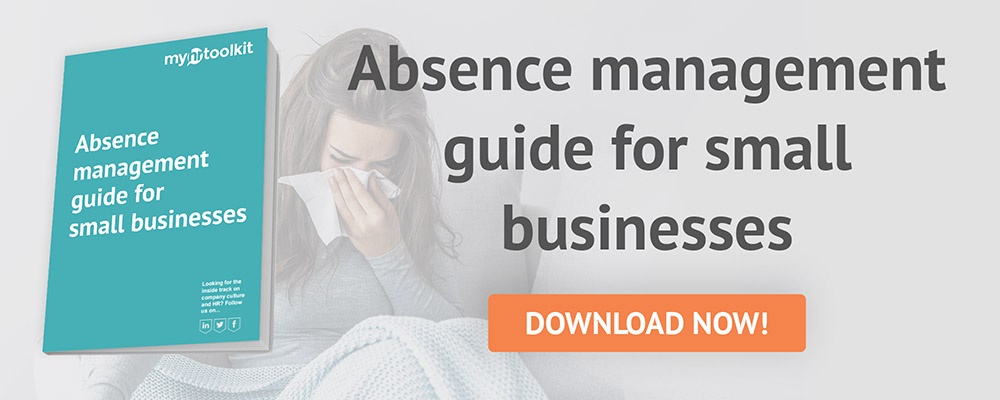Absence from work generally falls into two categories; that which is agreed and approved in advance and that which is not and is therefore unauthorised. For most organisations, an unauthorised absence will lead to the start of an HR process or procedure.
There are all sorts of reasons why someone may be absent from work without the necessary permission. There could be an old-fashioned misunderstanding, a personal problem, deliberate misbehaviour, or on rare occasions the individual has decided to resign but has not quite got round to telling the employer. Occasionally, employees will have had a request for annual leave declined – but decide to go on holiday anyway.
There are several steps to follow in the case of unauthorised absence, but first and perhaps most importantly – don’t assume anything! Don’t assume that the absence is a resignation, and don’t assume that this is a disciplinary or misconduct matter until the situation has been properly investigated. It is possible that unauthorised absence may be a disciplinary matter, but as absence can take many forms, there is no one “right” way that it should be managed.
5 steps to addressing an unauthorised absence
You can follow these simple steps when an employee is absent from work without authorisation to help establish why they are absent and resolve the situation:
1. Attempt contact

As a first step, try to contact the employee, initially by phone and then in writing. If the employee cannot be contacted or fails to respond to messages, write to the employee and advise them that they are considered to be absent from work without authorisation, giving them a deadline by which they must contact their manager or HR.
 2. Establish reasons for absence
2. Establish reasons for absence
Identifying the reason for the absence should guide the employer’s next steps. Where the employee makes contact and provides a reason for their absence, the employer must determine whether this is an acceptable reason or not. Whatever decision is made will determine what process – if any – should follow.
3. Start the process

Sometimes no process will be necessary: for example, if the employee had a family emergency leading to their absence, the employer may simply decide to take no action other than reminding the individual about their absence reporting procedures.
Where the employee has no acceptable reason for their absence, it may be appropriate to commence disciplinary proceedings. Remember - an investigation should always be undertaken first. Where an employee does not respond to the employer at all, there will be a need for a different approach.
4. Follow the policy
Where the employee had no acceptable reason for their absence, the organisation should follow their normal disciplinary policy and procedures. Whether a formal warning is issued should take into account the reason for the absence, its duration and any impact on the business. The same disciplinary policy and procedure should also apply to the employee who is still absent from work without authorisation and who has failed to respond to those attempts to contact them.
Learn more: How to create great HR policies as an SME
5. The continued missing person

Where no contact can be made and the employee continues to be absent, it may be tempting to assume they have resigned. A safer approach is to undertake disciplinary proceedings, even if the employee does not attend or participate.
They should be invited to a disciplinary meeting and given the opportunity to explain their side of events. Invite them to a meeting in writing, making it clear that if they fail to attend a decision will be made in their absence; this can include treating the issue as a gross misconduct offence for which an unauthorised absence termination will be an outcome.
To avoid this issue arising too often, it’s always a good idea to ensure that procedures relating to absence and absence reporting are clear and well communicated. Make sure that employees also have the correct contact details for absence reporting. Finally, keep good absence records for all your people!
Track and monitor absences across the organisation with an online absence management system
Read more from our blog
What are the 5 fair reasons for dismissal?
How to discipline employees who are late – and whether you should

Written by Gemma Dale
Gemma Dale is an experienced senior HR professional, CIPD Chartered Fellow, HEA Fellow, and a regular speaker and writer on a variety of HR topics. Gemma is the co-author of the book 'Flexible Working' published by Kogan Page in 2020. She is also a lecturer in the Business School at Liverpool John Moores University and runs her own business, The Work Consultancy.


 Holiday Planner
Holiday Planner Absence Management
Absence Management Performance Management
Performance Management Staff Management
Staff Management Document Management
Document Management Reporting
Reporting Health and Safety Management
Health and Safety Management Task Management
Task Management Security Centre
Security Centre Self Service
Self Service Mobile
Mobile



